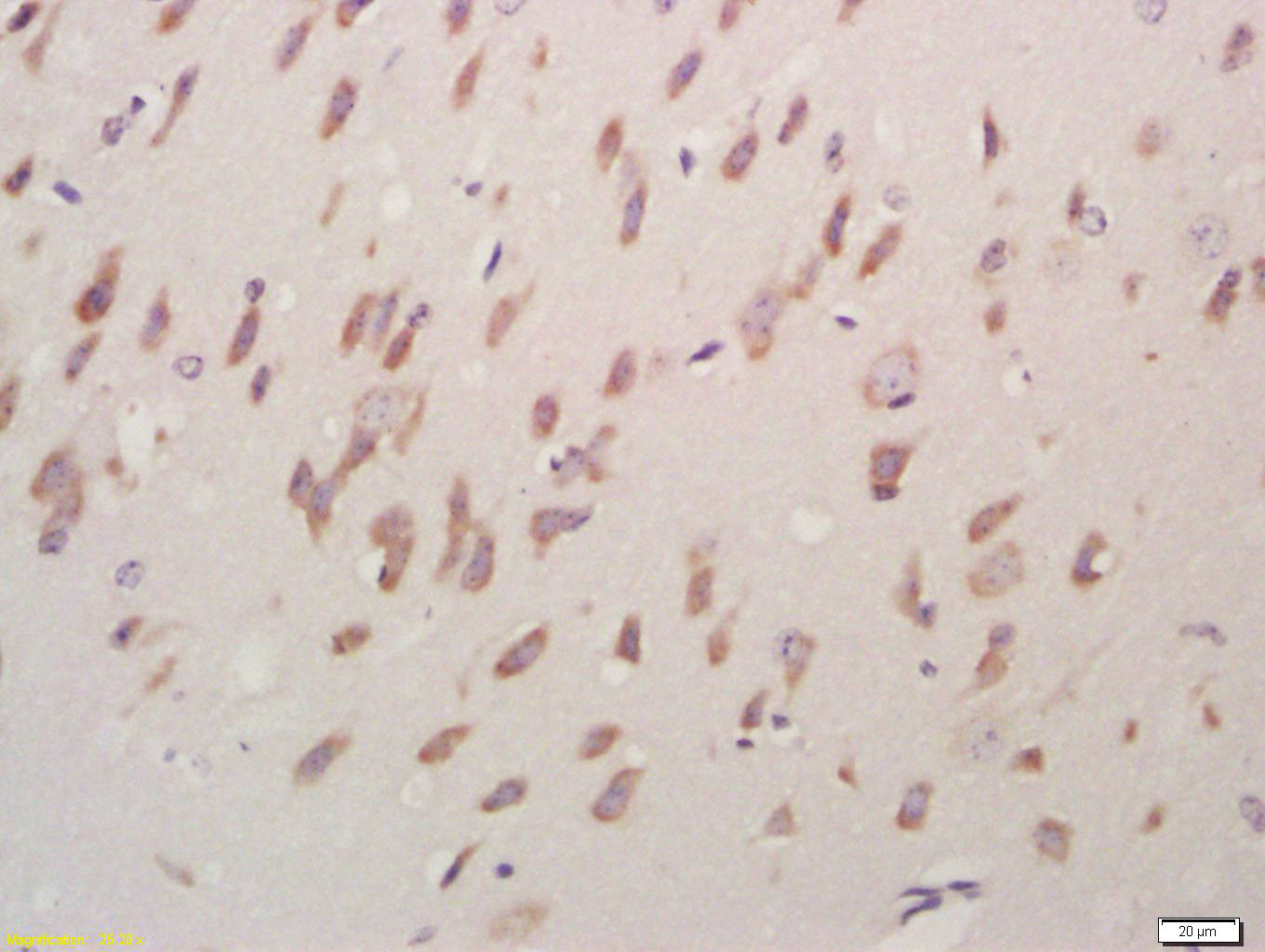
Rabbit Anti-ACCN1 antibody
ACCN; ASIC2a; BNaC1; ASIC2; ASICs2 ACCN1_HUMAN; Acid sensing ion channel 2; Acid-sensing ion channel 2; Amiloride sensitive brain sodium channel; Amiloride sensitive cation channel 1 neuronal (degenerin); Amiloride sensitive cation channel 1 neuronal; Ami
View History [Clear]
Details
Product Name ACCN1 Chinese Name 脑钠Channel protein1抗体 Alias ACCN; ASIC2a; BNaC1; ASIC2; ASICs2 ACCN1_HUMAN; Acid sensing ion channel 2; Acid-sensing ion channel 2; Amiloride sensitive brain sodium channel; Amiloride sensitive cation channel 1 neuronal (degenerin); Amiloride sensitive cation channel 1 neuronal; Amiloride-sensitive brain sodium channel; Amiloride-sensitive cation channel 1, neuronal; Amiloride-sensitive cation channel neuronal 1; ASIC2; ASIC2a; BNaC1; Brain sodium channel 1; Degenerin; hBNaC1; Mammalian degenerin homolog; MDEG; Neuronal amiloride sensitive cation channel 1. literatures Research Area Cell biology immunology Neurobiology Channel protein lymphocyte t-lymphocyte Immunogen Species Rabbit Clonality Polyclonal React Species Rat, (predicted: Human, Mouse, Dog, Cow, Horse, Rabbit, ) Applications WB=1:500-2000 ELISA=1:5000-10000 IHC-P=1:100-500 IHC-F=1:100-500 ICC=1:100-500 IF=1:100-500 (Paraffin sections need antigen repair)
not yet tested in other applications.
optimal dilutions/concentrations should be determined by the end user.Theoretical molecular weight 56kDa Cellular localization cytoplasmic The cell membrane Form Liquid Concentration 1mg/ml immunogen KLH conjugated synthetic peptide derived from human ACCN1: 301-400/512 <Extracellular> Lsotype IgG Purification affinity purified by Protein A Buffer Solution 0.01M TBS(pH7.4) with 1% BSA, 0.03% Proclin300 and 50% Glycerol. Storage Shipped at 4℃. Store at -20 °C for one year. Avoid repeated freeze/thaw cycles. Attention This product as supplied is intended for research use only, not for use in human, therapeutic or diagnostic applications. PubMed PubMed Product Detail Degenerin/epithelial sodium channel (DEG/ENaC) superfamily members are amiloride-sensitive sodium channels that contain intracellular N- and C-termini, 2 two hydrophobic transmembrane regions and a cysteine-containing extracellular loop. Acid sensing ion channel ASIC1, also designated ACCN2, BNAC2 and ASIC1a, is present in brain as a 4.3-kb transcript with localization to rat dorsal root ganglia. In situ hybridization of rat brain suggests that ASIC1 is most abundant in the main olfactory bulb, cerebral cortex, hippocampal formation, habenula, basolateral amygdaloid nuclei and cerebellum. ASIC1 and H+-gated currents may contribute to the development of fear and anxiety. ASIC2, also designated amiloride-sensitive cation channel 1, neuronal (ACCN1), mammalian degenerin, BNAC1 (MDEG) and brain Na+ channel 1, mediates the normal detection of light touch. ASIC2 mRNA is abundant in brain, specifically in neurons. ASIC2 is expressed as 2.7- and 3.7-kb transcripts in brain and spinal cord tissues. ASIC3, also designated ASIC3, SLNAC1 and TNaC1, mediates detection of lasting pH changes and is involved in modulating moderate- to high-intensity pain sensation. ASIC4, also designated ACCN4 and BNAC4, is abundant in pituitary gland and is also present in the inner ear.
Function:
Cation channel with high affinity for sodium, which is gated by extracellular protons and inhibited by the diuretic amiloride. Also permeable for Li(+) and K(+). Generates a biphasic current with a fast inactivating and a slow sustained phase. Heteromeric channel assembly seems to modulate.
Subcellular Location:
Cell membrane. Localized at the plasma membrane of neurons, in the soma and punctated peripheral processes.
Tissue Specificity:
Brain and spinal cord. Isoform 1 is also detected in testis, liver, colon and ovary.
Similarity:
Belongs to the amiloride-sensitive sodium channel (TC 1.A.6) family. ACCN1 subfamily.
SWISS:
Q16515
Gene ID:
40
Database links:Entrez Gene: 40 Human
Entrez Gene: 11418 Mouse
Omim: 601784 Human
SwissProt: Q16515 Human
SwissProt: Q925H0 Mouse
Unigene: 368417 Human
Unigene: 234998 Mouse
Unigene: 37523 Rat
Product Picture
Antigen retrieval: citrate buffer ( 0.01M, pH 6.0 ), Boiling bathing for 15min; Block endogenous peroxidase by 3% Hydrogen peroxide for 30min; Blocking buffer (normal goat serum,C-0005) at 37℃ for 20 min;
Incubation: Anti-ACCN1 Polyclonal Antibody, Unconjugated(SL4915R) 1:200, overnight at 4°C, followed by conjugation to the secondary antibody(SP-0023) and DAB(C-0010) staining
References (0)
No References
Bought notes(bought amounts latest0)
No one bought this product
User Comment(Total0User Comment Num)
- No comment



 +86 571 56623320
+86 571 56623320
 +86 18668110335
+86 18668110335

